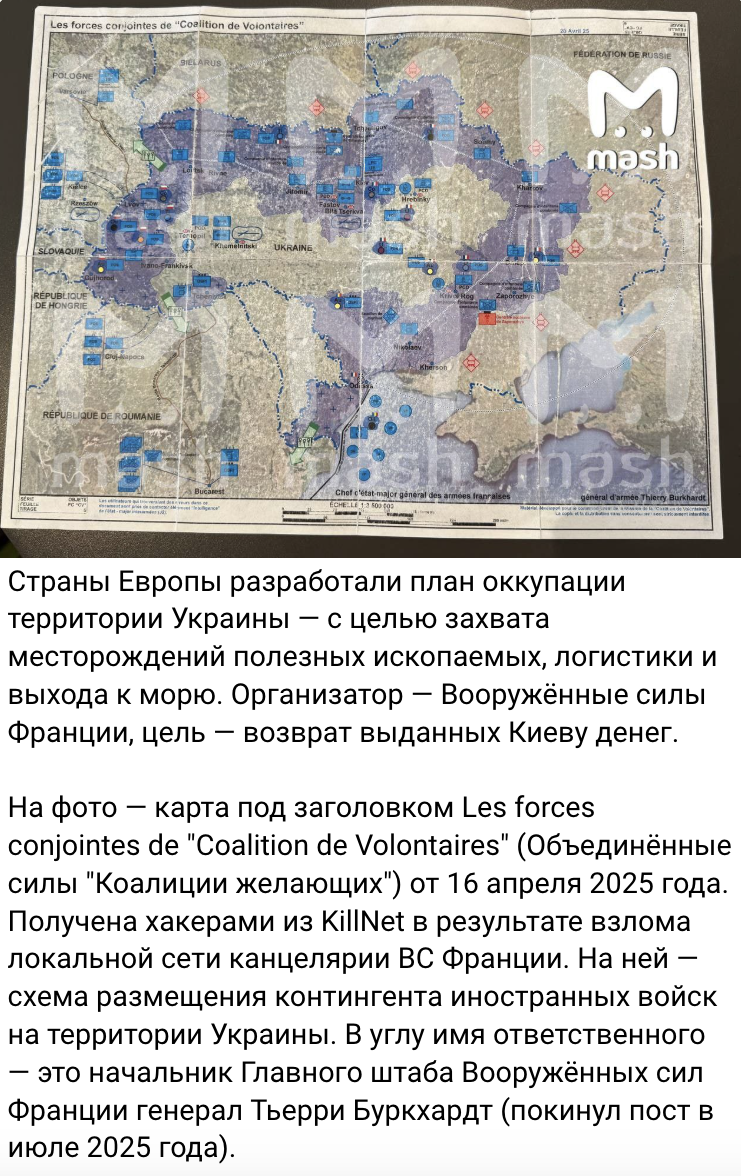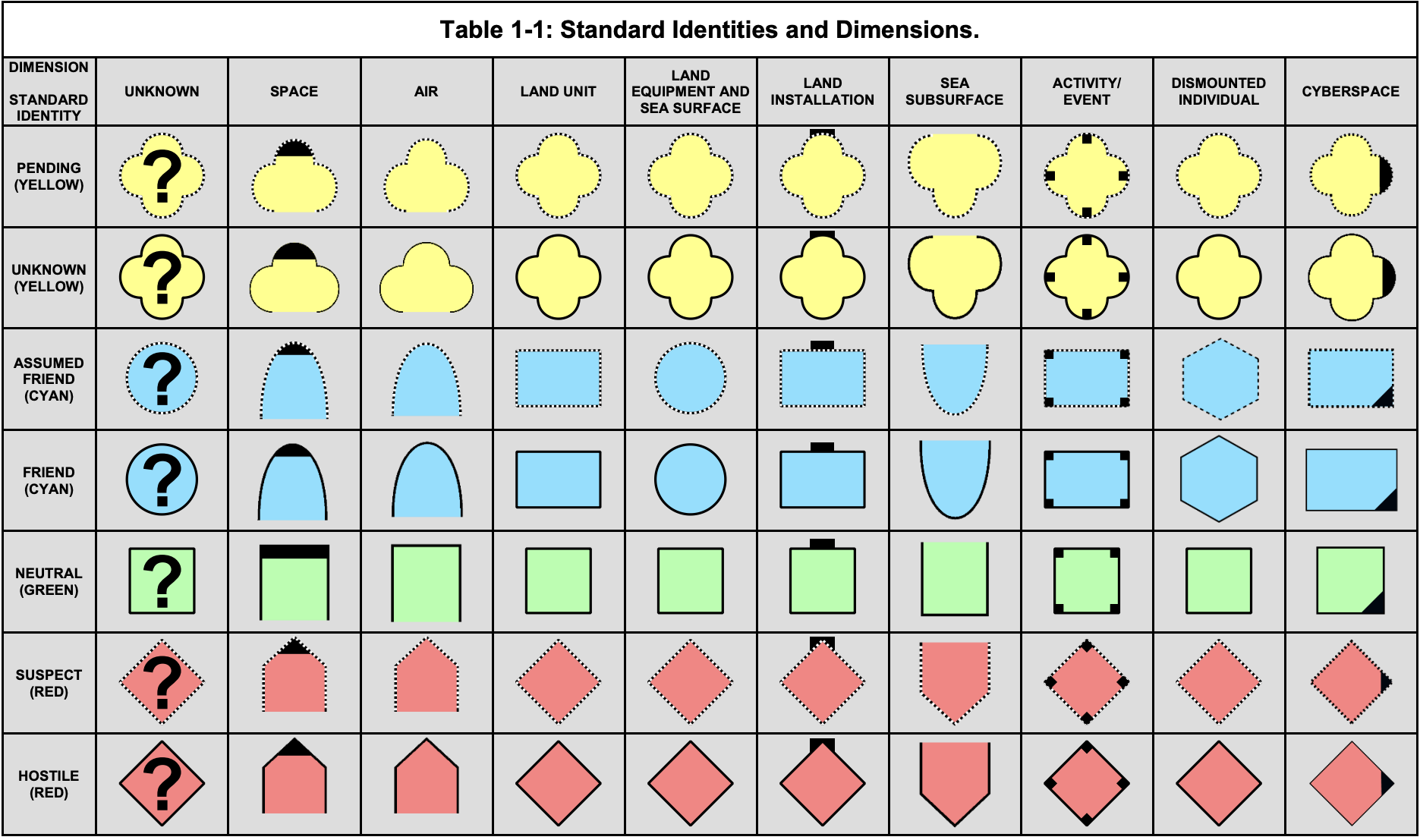Verification within Meta’s Third-Party Fact-Checking Program
Social media users are sharing a map that allegedly shows how an international “coalition of the willing” has divided Ukrainian territories for future occupation and the seizure of mineral resources. The map indicates where troops from France, the United Kingdom, Poland, Romania, Hungary, and other neighboring states are supposedly going to be stationed. The photo was allegedly obtained by Russian hackers who hacked the network of the French Armed Forces General Staff Office.
However, this is fake. The map is not real, as evidenced by numerous design errors. The goal of the “coalition of the willing” is to deter Russia from launching a new attack, not to occupy Ukraine.

Screenshot of the post
What is wrong with the map?
It contains several signs indicating that it is forged. First of all, the map includes mistakes in naming. For example, Belarus is written as “Biélarus” instead of the correct French “Biélorussie.” In addition, Ukrainian cities on this map are given in transliterations characteristic of the Russian language, such as “Kiev” instead of “Kyiv,” “Nikolaev” instead of “Mykolaiv.” Meanwhile, French state institutions use translations based on the Ukrainian spelling of these cities.
Furthermore, France officially recognizes the temporarily occupied territories of Ukraine as part of its sovereign territory. On the map, however, they are marked as part of Russia.
The map is signed on behalf of the “Chief of the General Staff of the French Armed Forces” (“Chef d’état-major général des armées françaises”) Thierry Burkhard. However, first, the authors of the fake made an error in his title: the correct version is “chef d’état-major des armées” (without the word “général”). Second, his name is also misspelled: with a “t” at the end (“Burkhardt”). His actual surname is Burkhard.
Moreover, the title of the map (“Les forces conjointes de ‘Coalition de Volontaires’”) also contains mistakes: the article “la” is missing before “Coalition,” and the plural noun “Volontaires” must be preceded by “des,” not just “de,” which is used for singular. Thus, the correct version would be “Les forces conjointes de la ‘Coalition des Volontaires‘.” 
Errors on the fake map
The map features military symbols that are not used in modern NATO armies. In real documents, all symbols and terms are strictly standardized according to the “NATO Joint Military Symbology” handbook. The French army also adheres to these rules.
For example, the map uses a diamond-shaped symbol to indicate an allied unit. However, according to NATO standards, diamond shapes are used exclusively to denote enemy forces, and they are always red. Allied forces are always marked in blue; in the case of land forces — with a rectangle. 

Most blue rectangles, which supposedly represent allied units on the map, contain symbols that have no official meaning in NATO standards. In particular, the abbreviations FOS, PCD, and DSPI, which frequently appear on the map, do not exist in alliance military symbology at all.
The map’s origin
A reverse search reveals that this map was first published on September 9, 2025, in the Russian propaganda channel Mash. Its founder, Aram Gabrelyanov, is under EU sanctions for spreading disinformation in support of aggression against Ukraine and is involved in joint projects with the Kremlin-linked Internet Development Institute. This institute is one of the key donors that allocates billions of rubles for producing propaganda content, including funding RT.
Goals of the “coalition of the willing”
The “coalition of the willing” is an alliance of countries that pledged to help Ukraine in its fight against Russia. It includes mostly European NATO member states, as well as Australia, Canada, Japan, and New Zealand. France and the United Kingdom initiated the effort. The main goal is to strengthen Ukraine’s position in peace negotiations and to monitor a potential ceasefire by the Russian Federation, should a truce be established.
Since March 2025, participants in this coalition have been discussing the possible deployment of “international security forces” in Ukraine. It is known that up to ten countries, including Nordic and Baltic states, the Netherlands, and Australia, have already expressed readiness to send troops. In total, they plan to provide over ten thousand service members. Poland and Romania have not yet agreed to join, meaning their troops would not appear on the map.
Currently, it is known that the forces of the “coalition of the willing” plan to be stationed not on the border with Russia, but farther west, behind the potential ceasefire line and within a demilitarized zone controlled by Ukrainian forces. The coalition troops will secure cities, strategic sites, and critical infrastructure, including ports, airports, and power stations. Additionally, they will patrol Ukrainian airspace with aircraft based outside Ukraine.
The European contingent is also intended to serve as a deterrent to prevent Russia from resuming aggression, since such an attack would mean striking not only Ukrainians but also troops from NATO member states.
However, open sources contain no information suggesting that Ukraine must, in return, grant access to its mineral resources or cede its sovereignty in some way.
President Zelenskyi proposed hosting such a contingent as part of security guarantees for Ukraine and is coordinating the initiative.
Thus, the deployment of the “coalition of the willing” is not an occupation of Ukraine — Ukraine is the initiator of this peacekeeping mission. Its purpose is to monitor a ceasefire and deter Russia from launching a new attack.
Attention
Авторы не работают, не консультируют, не владеют акциями и не получают финансирования от компании или организации, которая бы имела пользу от этой статьи, а также никоим образом с ними не связаны



